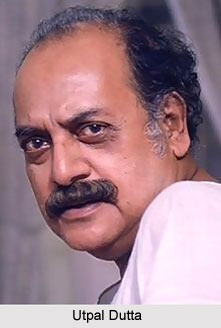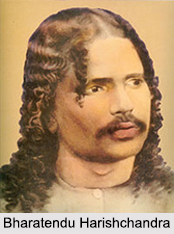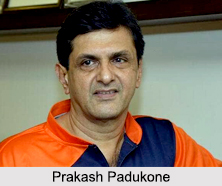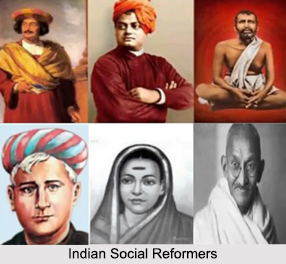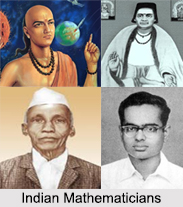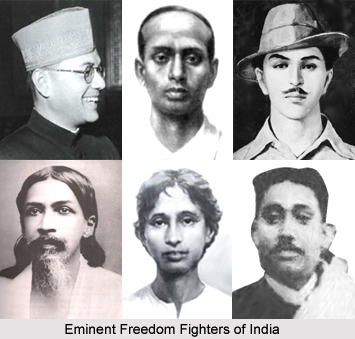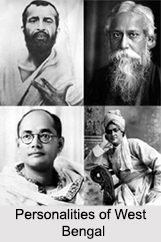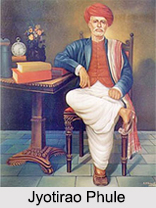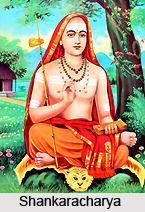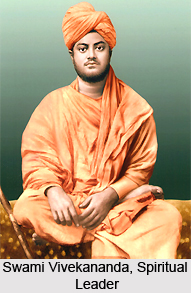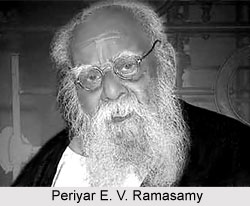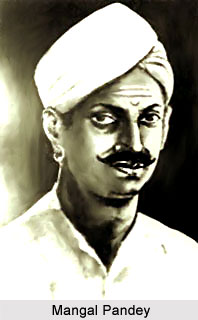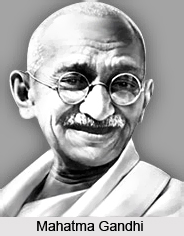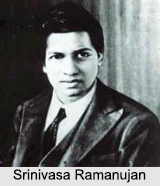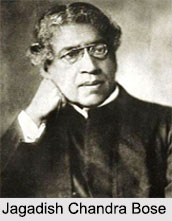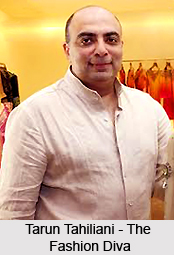 Tarun Tahiliani is best known for his ability to infuse Indian craftsmanship and textile heritage with European tailored silhouette. His signature is to combine traditional aesthetics, refined luxury with modern, meticulous design.
Tarun Tahiliani is best known for his ability to infuse Indian craftsmanship and textile heritage with European tailored silhouette. His signature is to combine traditional aesthetics, refined luxury with modern, meticulous design.
Tarun started his professional career in management, with a degree from the Wharton School of Business. In 1987 he conceived of starting a world-class fashion store in Mumbai that would house up-market designer clothing. Tarun and his wife Sailaja chose a handful of talented young, undiscovered designers, which led to the birth of Ensemble, and along with it a revolution that would change the face of the fashion industry. Tarun`s own design career also had its inception in the birth of Ensemble. Although he had the flair he honed his technical knowledge in design by qualifying for an associate degree from the Fashion Institute of Technology in New York.
After the tremendous success of his first solo show "The Rubaiyat" in September 1994 at the Dorchester in London, he has continued to present exclusive, well attended and highly publicized shows in major cities all over the world. Style, craftsmanship, quality and refinement are the defining symbols of Tarun`s garments. His collections attempt to rejuvenate ideas towards a renewal for contemporary Indian life. A wide spectrum of silhouettes and styles complement his trademark drapes and subtlety. Today, Tarun, the master of drape, is one of the most sought after and successful fashion designers in the country whose clients cover a domestic and international arena.
Recently, Ensemble inaugurated a boutique in New Delhi. Tarun Tahiliani`s first store within a store` at Ambawata, Mehrauli has an attached couture salon where bridal and occasion wear will be designed and fitted in consultation with clients. Menswear and home-furnishings are also retailed from this outlet.
Fashion Shows
LIFW 2003
Tarun`s collection was pure patriotic with beautifully crafted, stunningly styled clothes that had exquisite embroidery, quilting, ruching and draping in fabulous fabrics. Skirt lengths and shapes were democratic. Trousers were wide and flowing Tibetan or palazzos, there were still plenty of flares. The mouth-wateringly soft tan suede range was luxurious; embroidered in gold and precisely cut. There was a sherwani, over flared trousers, and a knee length straight fitting skirt. Tarun also featured his beautiful chikan range. Another Tarun trademark was the Grecian goddess range of sophisticated evening wear in a rainbow of solid colours from Emerald to citrus yellow to tangerine to orange. Pashminas were used to drape and soften silhouettes, feathers trimmed saris and Swarovski crystals glittered richly.
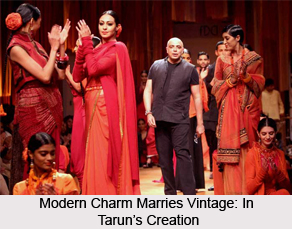 LIFW 2004
LIFW 2004
Tarun Tahiliani has the ability to make the men and women look like Gods and Goddesses of love and passion. And that`s exactly what his 2004 collection was all about. The women looked sexy and stunning in Chinese cheongsam and jewelled blouses, and dresses with endless side slits. There was the presence of unusual bottom wear in form of Japanese inspired pants, Turkish pants, skirts, pajamas and pants. Dressy tee-shirts in sexy shapes with engineered petra durra and Hyderabadi jewel prints on necklines; midnight tryst black georgettes embroidered in black chikankari and embellished with star spangled baby crystals; and elegant festive sarees with vibrant floral prints and sequin work. The colour palette included rich colours like oranges, pinks, blacks, reds and turquoises amongst others. The men`s wear was masculine and exquisitely well tailored, with incredible linen and cotton suits, quilted jackets and pants that caressed the body.
LIFW 2005
Tahiliani`s show was a heady mix of luxury and opulence. The use of coins and feathers added a feeling of Middle Eastern charm. There were his signature fluted corset blouses, most of his t-shirts had jewelling details and digital print kaftans were worn on jeans. Gypsy skirts were in a new entrant into the Tarun Tahiliani style.
Wills Lifestyle IFW 2006
The collection was a departure from India modern with an Ottoman twist to the tale! There was a presence of Black and beige exoticism mixes with jewels on velvet; prints and paisley motifs with contemporary caftans and unusual chikan silhouettes on skin with salwar kameez and skirts. The collection redefined the modern Indian luxury that was rooted in the past yet embraced the world at large.

